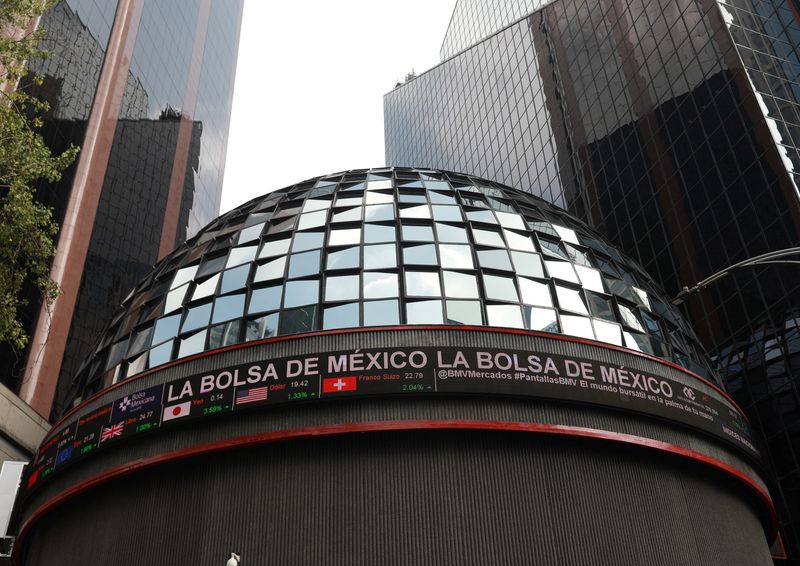By Noé Torres and Rodrigo Campos
MEXICO CITY/NEW YORK (Reuters) – The Mexican peso hit its weakest level against the U.S. dollar in almost two years before paring much of the losses on concerns that the U.S. economy could be heading for a recession, on top of the peso’s recent weakness as a popular trend. world trade comes to a standstill.
The Mexican currency was trading at 19.37 pesos per dollar, down about 1.1% from Friday’s close. The peso’s decline in foreign operations was as much as 4.4%, as the currency crossed the psychological barrier of 20 pesos per dollar, a level not seen since October 2022.
The peso was swept by a wave of liquidations in global markets, especially in Asia. The Japanese yen rose to a seven-month high against the dollar as traders unwound carry trade positions, one of the factors that had sustained the peso’s strength until recently.
The trade involves financing in low-interest currencies such as the yen, while investing in higher-interest currencies such as the peso to make up the difference in returns.
“As with any domino effect where there is panic, everything moves towards safe haven assets and assets considered risky, such as the Mexican peso, are left behind,” said Gabriela Siller, director of analysis at local firm Banco Base.
The Mexican currency fell about 1% on Monday and has suffered a loss of 4% against the dollar since the close on Wednesday. The sell-off was triggered by the release of data last Thursday showing US manufacturing activity fell to the lowest level in eight months.
“There are simply too many uncertainties on both the U.S. and Mexican sides,” Commerzbank (ETR:) FX analyst Michael Pfister said in a Monday note, citing political uncertainty on both sides of that border and the possibility of an interest rate cut this month. week in Mexico, even as inflation remains a concern.
“We can imagine that the peso could benefit somewhat in the coming weeks and recover some of last week’s losses,” he added, but until early next year “we see worse times ahead.”

A weak US labor market report on Friday added to prospects of a slowing US economy, while the unemployment rate rose to near a three-year high of 4.3% in July.
Mexico is very sensitive to economic developments in the US, its most important trading partner and the destination for more than 80% of its exports.


